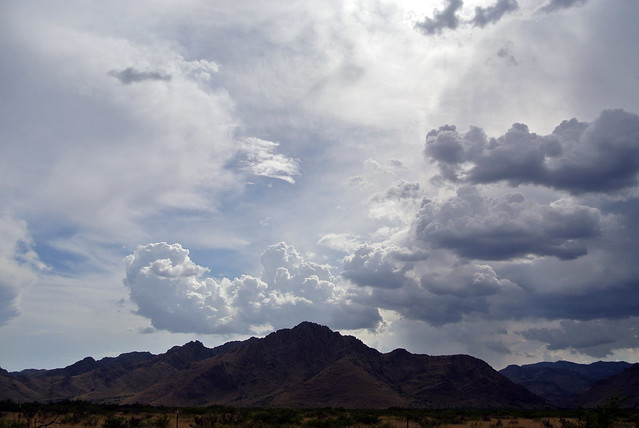A hard first frost here last night means a harvest today of these guys.
First frost
Written by karen on November 6th, 2015Everything I didn’t want to know about nematodes
Written by karen on October 27th, 2015I’d heard of nematodes, but was only vaguely aware of them as some sort of awful garden pest. Mostly, I focus most of my energy on challenges I already have, and nematode problems we did not have. Until now.
This year in clearing out some beds for fall plantings, I found roots that were gnarled with lumps, indicative I learned, of bad nematodes.
I went on to learn that nematodes are the most prevalent multi-celled animals on earth and roughly resemble microscopic worms. There are both bad and good varieties, and the bad ones destroy about 5% of crops worldwide. In gardens like mine, they are responsible for lower yields and weaker plants.
There are several ways to combat bad nematodes: replace all your soil (not a great option), plant French marigolds (questionable as to effectiveness) or fight them with so-called beneficial nematodes. These good nematodes can also combat other insect pests.
Turning to Amazon, we found many vendors who sell these beneficial nematodes, and these are the ones we ended up with.
They are shipped live and must be kept cool or they’ll die. They come in a little sponge which is washed out into water which is sprayed on the garden with a hose sprayer. They need to be applied in the evening when it is cool and there is low light. Apparently, they’re most effective with multiple applications, so we’ll do this again a couple times in the spring.
How did these bad nematodes get here, you ask? We asked ourselves the same question. One guess is that they were brought in with loads of external compost.
It will likely be another year before we know if this worked, so stay tuned for that.
In the meantime, about 400 garlic and shallots are now in the ground for winter. We’ll hope the nematodes don’t affect them.
Happy October!
Written by karen on October 1st, 2015Kids Maker Day 2015
Written by karen on September 22nd, 2015(cross-posted from Mobile Musings)
This year’s Kids Maker Day (part of our local Heritage Days) is now behind us and was a big success as always. Our theme was flight.
We had kids from ages 2 to 80 participate. (A couple adults said that building planes seemed like more fun that listening to lectures in the adult portion of the program. :)
We started the day with building paper airplanes. Most kids started with designs they were already familiar with and then drifted into the books and printouts that we’d laid around the tables for more exotic designs. After making their planes, we went outside for flight tests, which led to testing, redesign, iteration, and more testing. We had contests for the longest distance flight, the longest time in the air, the smallest plane, and the most visually attractive.
After that, we went on to make balsa wood gliders. This was a favorite activity of many of when we were young, and the kids really loved it.
After that, we shifted gears to build marble mazes. The kids really liked last year’s cardboard challenge, and this was a variation on that. I had deliberated beforehand whether to make this a contest of sorts, but ultimately left it more open-ended.
The kids wanted to form their own groups to do this and surprised us by dividing into just two groups — boys and girls. It was interesting to watch how the two groups worked with the boys ultimately splintering into several groups (and a few working by themselves) and the girls really bonding as a team and coming up with something quite complicated. Several of the kids were so absorbed in the work that they went right through lunch.
After lunch came the favorite activity of the day — stomp rockets. These were built with 2-liter pop bottles, a length of bicycle tubing, a piece of PVC tubing, and a paper rocket. One of the highlights was when a couple girls launched their rocket, not once but twice, onto the roof of the building. It was also a revelation that stomping harder wasn’t necessarily better after a couple adults stomped so hard that they broke the bottles.
The day ended with a kid-suggested cooking activity. We made chocolate and caramel sauces and dipped fruit in them. (With the addition of this and a surprise visit from Smokey the Bear, we dropped the planned activities of hovercrafts, which were underwhelming in our pre-event testing, and kites, which we’ll save for another day.)
I’m already thinking about what we’ll do next year. Textiles? Cooking? Painting? There are so many choices.
This year’s garden
Written by karen on September 17th, 2015Every year, the garden is a little different. This year seemed more different than most. We had a lot of rain (the monsoons are still going, though they seem close to the end), and it didn’t get as hot as usual. I don’t know if this accounted for the change or not, but things grew more slowly than usual.
We had more problems with pests than usual, including a newly developed talent of the rabbits to chew through our expensive insect netting. Brad got good at sewing it up. We had some other invaders, which are making us think about new ideas for next year.
This year’s top-producing crop was cucumbers. We must have harvested close to 150 of them, have given them to everyone we know, and have found some great new ways to use them, including several varieties of cucumber cocktails.
We have also enjoyed lettuce, watermelons, cantaloupe, strawberries, and onions. The tomatoes have been slow but are now really coming in. We’ve made several batches of salsa and tomato sauce and will make several more before the season ends.
Some things are just now ready. This is my first ever success with eggplant (picked today) and chiles. Both were ravaged by bugs early in the season, but then came back and produced.
All in all, it’s been a good year. We’ve had lots of fresh food to eat and share and will have lots put away for the winter.
Green grasslands
Written by karen on August 26th, 2015The monsoons have stretched out this year and have provided good, solid rains for two months now. They could end any day now, and we are enjoying them while they last.
The grass is tall and green, and we have actually had to cut the grass in the courtyard between the houses a couple times now.
On a walk the other day, we surprised a few javelinas, which looked rather like dolphins on the ocean as they lept through the tall grass.
This morning, looking out at the cows, they appeared to be floating in the field.
Cabinets and closets
Written by karen on July 24th, 2015Progress of the beans
Written by karen on July 8th, 2015The magic beans are doing well. Here are some pics along the way and a few random notes.
Miscellaneous notes:
- The beans took about a week to come up. I watered them daily until they were about 6″ high and then less frequently after that.
- The germination rate was close to 100%.
- Somewhere around week 2, the leaves of the beans started getting eaten pretty good. I suspect cutter bees. Since they aren’t around much and are supposed to do more good than harm, I decided to just leave them and see what happened.
- As expected, the cutter bees didn’t stay around long. They did a fair amount of damage, but nothing that couldn’t be overcome.
- At about 4 weeks, the monsoons hit, and the beans started growing much faster (like everything else).
- Today, at about 6 weeks, we saw the first blooms. I had heard they would be very pretty and red. these are a dark orange. We’ll see how the others look.
Garlic and Shallots for 2014-2015
Written by brad on July 6th, 2015Back in the fall equinox of 2014, we planted 300 garlic and 50 French shallots. They plodded along all winter and then took off in the spring. After a few years experimentation, we’ve concluded that garlic/shallots like being sprinkled (as opposed to just dripped) — at least come spring (we hand water in the winter).
We had a very good year for both with greater than 100 percent yield. What you say? During early spring, Karen noticed garlic and shallots volunteering themselves in various beds around the garden. I told her to pull them up and compost them. Instead she began carefully digging them up and replanting them in what we began to call the “rogue” bed. I had a lot of doubts, but I was wrong. What little loss we had in the main beds was more than made up for from the “rogue” bed.
Garlic store quite well, but sometime around December-January each year our eating garlic starts to get a little soft. In an attempt to stretch out our supply a little, we’re switching to two types of garlic. The purple majestic is ready a little earlier then most garlic — around the end of May, early June. We’re adding a type of garlic called Music (very white in color) that is ready about a month later in early July. This doesn’t mean it will last a month longer, but it’s worth trying.
For our shallots we’ve settled on just the French shallots. I like red shallots a lot, but they don’t like the heat here — especially after they’ve been harvested.
The shallots have been harvested and are curing now. It’s interesting to note that while garlic are really missing something if you eat them before they are cured, shallots are yummy immediately.
The total haul for the garlic (post curing) this year is twenty-two and a half pounds. We won’t know about the shallots until they are finished curing.
One thought I had this year when I was doing the final processing of the garlic is just how much you touch garlic to produce it. At the start, you separate the cloves by hand. You pick each one up to plant them. Once they’re harvested, you pull them up by hand, and you spread them out to cure. They final step is to cut off the roots and the top before you rub vigorously to remove all the loose layers of skin.
Monsoons have arrived
Written by karen on June 27th, 2015The eagerly anticipated monsoons have arrived here this week. (Did you know there was a monsoon season anywhere in America? I didn’t before I moved here.) This is big fun for us. Billowy clouds build up over the mountains during the hot, sunny days, gradually darkening and getting more ominous, and then bursting into violent thunderstorms in the evenings. Sometimes drenching us with torrential rains; other times surrounding us with downpours that seems to be everywhere but on our little piece of land. It’s an adventure every day to see what happens. One of my favorite times of year here.



























